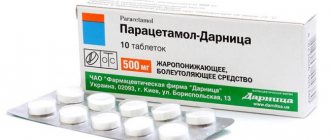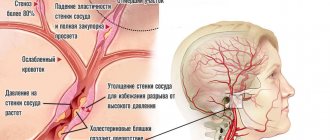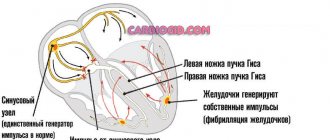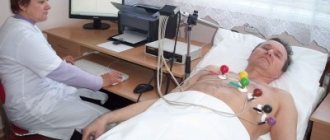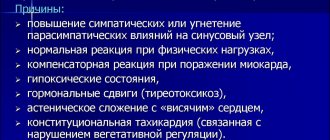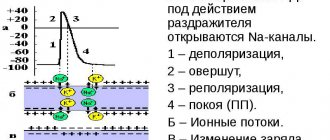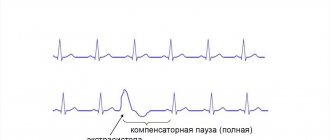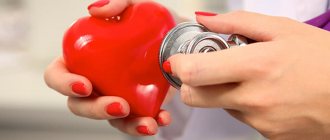Accelerated heartbeat: what is it?
If a person's heart beats too many times per minute, medical professionals talk about a condition called tachycardia. What it is? This is an excess of the optimal number (90 times per minute) of contractions of the heart muscle.
One type of such human heart disease is sinus tachycardia. This is a situation where the heart rate (heart rate) increases against the background of a moderate heart rate.
What happens to the cardiovascular system affected by this disease, and is it dangerous? In a healthy body, the electrical impulse originates in the sinus node and continues in the main order, resulting in regular contraction of the ventricles and atria.
For heart problems, the electrical impulse also begins in the sinus node. However, a more frequent heartbeat is provoked by an increase in the frequency of electrical impulses that come from the sinus node.
Sinus tachycardia ICD 10 indicates dysfunctional functioning of the cardiovascular system and requires adequate measures. After all, timely treatment of sinus tachycardia allows a person to maintain his health for many years.
Very often it is diagnosed in people who suffer from heart disease, in children and in pregnant women. Also, similar problems arise with pain during angina pectoris, acute myocardial infarction and other diseases of the heart muscle.
What to do and what not to do with tachycardia
The patient’s condition depends not only on the handfuls of pills taken, but on his actions, because the local therapist cannot sit at the head of such a patient every minute to provide assistance to him.
Patients must firmly understand what to do and what not to do during tachycardia.
What not to do with tachycardia:
- drink drinks containing caffeine and other stimulants, as well as alcohol;
- smoking (even one cigarette every six months is prohibited);
- lean on salty foods (it’s better to avoid them completely);
- work hard in the gym doing an intensive program;
- self-medicate (for example, for supraventricular tachycardia, take medications for junctional tachycardia);
What to do:
- develop the habit of measuring your pulse, and don’t be lazy about drawing up daily curves (they will be useful for a doctor’s analysis);
- lean on fresh fruits and berries (especially lingonberries, raspberries, viburnum);
- perform light exercise, but regularly;
- eat in moderation - a full stomach pushes up the diaphragm, which in turn puts pressure on the heart, interfering with its work - this is the answer to the question of whether there can be tachycardia after eating;
- adjust the mode of work, rest, sleep, nutrition, sex.
Such simple actions can prevent severe forms of tachycardia. You can get more detailed answers to your questions (for example, what is ventricular tachycardia of the heart and what is it fraught with, when antiarrhythmics are prescribed, and so on) by opening our website https://dobrobut.com/.
How it appears
This disease can be diagnosed in completely healthy people of different age categories. However, it is more common in women and men of older age groups with heart problems. Sinus tachycardia can often be detected in a small child.
What causes an increase in the number of heart contractions, and what are the causes of a disease of this nature? In a healthy body, the automatism of the sinus node increases during psycho-emotional or physical overload, as well as with excessive consumption of coffee and other caffeine-containing products. Thus, the body ensures optimal blood supply to all organs during those moments when it performs strenuous work.
In other words, this is a completely adequate reaction of a healthy body to the active work of the sympathetic nervous system. Also, sinus tachycardia code ICD can also be observed in a person with a completely healthy heart, but if he is infected with any infection, suffers from anemia, or has problems with the thyroid gland. In addition, it is worth noting that such problems can be caused by such means as:
- aminophylline;
- glucocorticoid hormones, etc.
Causes of appearance and main types
Factors, conditions or diseases that can cause TS:
- physical activity or emotional experience;
- neurotic state - anxiety, fear, depression;
- heart disease - heart failure, defects, myocarditis, etc.;
- smoking, drinking alcohol, coffee, energy drinks;
- medications - blood pressure lowering, vasoconstrictor nasal drops, inhalers for bronchial asthma;
- diseases of the endocrine system - increased function of the thyroid gland (hyperthyroidism); tumor of the adrenal gland that produces adrenaline (pheochromocytoma); lack of a hormone that retains water in the body (diabetes insipidus);
- dehydration;
- infections;
- fever;
- anemia.
Depending on the cause, physiological and pathological TS are distinguished. However, I consider this division to be very arbitrary. For example, physical activity stimulates the heart to contract because skeletal muscles need large amounts of oxygen to do the work. This is physiological TS. And, say, with severe anemia or severe dehydration, all cells of the body also need oxygen. And in this case, an increase in heart rate acts as a compensatory mechanism, but such tachycardia is considered pathological.
Along the course, continuous and paroxysmal TS are distinguished. Inappropriate, or disproportionate, ST is also separately identified, in which the level of increase in heart rate does not correspond to the degree of stress (physical, emotional or pharmacological). For example, when walking quickly or jogging lightly over a short distance, the heart rate reaches 160-180 per minute. At the same time, in a calm state, the heartbeat is normal (from 60 to 90), and sometimes even reduced (bradycardia).
There is also a special variant of TS - postural orthostatic tachycardia syndrome (POTS). This syndrome is characterized by an increase in heart rate greater than 120/min. when moving from a horizontal to a vertical position. POTS is caused by a violation of the regulation of vascular tone, as a result of which when a person gets up, blood under the influence of gravity is redistributed to the lower parts of the body, and only after some time does blood circulation return to normal.
Causes
The disease is provoked by the following factors:
- heart failure and a high risk of heart attack, myocarditis, cardiosclerosis, etc.
- disruptions of the endocrine system: can be provoked by thyrotoxicosis, increased production of hormones such as adrenaline in pheochromocytoma;
- physical and psycho-emotional stress: stress, excessive enthusiasm, hard work;
- pregnancy: sinus tachycardia during pregnancy is quite common and requires close monitoring by the medical professional who is caring for the woman’s pregnancy;
- disorders of the autonomic nervous system: neurosis, affective psychosis; cardiopsychoneurosis;
- congenital anomalies of the body's development.
All these factors that cause problems with heart rhythm in a healthy person, in women during pregnancy or in children, can be observed in combination, or they can appear one at a time.
Respiratory failure as a cause of tachycardia
Decreased function of the respiratory system affects the functioning of the heart. The mechanism of tachycardia is approximately the same as with anemia, because if lung function deteriorates, a lack of oxygen occurs. There are many diseases that lead to respiratory failure, and they all have their own symptoms. Their most common signs, along with rapid heartbeat, are:
- difficulty inhaling or exhaling,
- feeling of suffocation
- the need to strain additional muscles during breathing (abdominal muscles, shoulder girdle),
- sleep and memory disturbances,
- headache,
- cough.
If palpitations are accompanied by such symptoms, you should definitely consult a pulmonologist, and if this is not possible, then consult a therapist.
Symptoms
The nature of the manifestation of the symptoms of this disease is largely determined by the degree of its severity, duration and characteristics of the course.
Symptoms of ICD10 tachycardia are the presence of rapid heartbeat, a feeling of heaviness and pain in the left side. A person may also experience a feeling of shortness of breath, shortness of breath and weakness.
Pregnant women with similar problems experience disturbed sleep, increased fatigue, decreased appetite and performance, and a general deterioration in their psycho-emotional state. Children may experience some moodiness, depression and low mobility.
Expert advice: “5 signs that it’s time to see a doctor”
An increased heart rate in itself does not necessarily indicate any illness. It is important under what circumstances this happens and what is accompanied by it. The following are situations in which you should consult a doctor:
- rapid heartbeat appears at rest;
- an increase in heart rate is accompanied by severe pain in the heart;
- the person often loses consciousness;
- tachycardia occurs sharply and suddenly and also stops;
- an increase in heart rate worsens the symptoms of existing cardiac pathology.
Diagnosis and treatment
Vertical sinus tachycardia requires immediate diagnosis and treatment.
To identify such a disease, it is necessary to carry out a number of studies. Among them, the leading role is given to the ECG. After all, daily Holter ECG monitoring is highly informative and harmless to the patient.
How is sinus tachycardia treated? Heart rate must be brought to the optimal level.
It involves a number of measures to reduce the purity of heart contractions and is carried out with the help of sedatives, as well as consultations with a psychologist. If there is reflex or compensatory tachycardia, it is necessary to eliminate the causes of the problem. Otherwise, therapy to reduce heart rate can cause a drop in blood pressure and only worsen the situation.
Treatment of tachycardia. Stopping attacks
The main groups of drugs for the treatment of an attack of tachycardia:
- beta blockers - inactivate stress hormones, thereby equalizing the heart rhythm;
- cardiac glycosides - popular for arrhythmias that are complicated by heart failure;
- sedatives (including herbal origin);
- Antioxidants are heart protectors against ubiquitous free radicals.
Tachycardia is often accompanied by unpleasant surges in blood pressure. Therefore, medications for blood pressure during tachycardia are also on the bedside table of those suffering from tachycardia.
Our doctors
Kedrinskaya Larisa Ivanovna
Experience 18 years / Doctor of the highest category, Candidate of Medical Sciences / General practitioner, cardiologist
Çà ïèñà òüñÿ ê âðà ÷ó
Vershuta Elena Vasilievna
More than 23 years of experience / Highest category, Candidate of Medical Sciences / Pediatric cardiologist, cardiologist, therapist
Çà ïèñà òüñÿ ê âðà ÷ó
+
Clinical case
A 39-year-old woman consulted her local physician with complaints of constant rapid heartbeat up to 110 per minute and periodic dizziness. These symptoms have been bothering the patient for a month. According to the patient, the pulse was always within 70-80/min. Upon examination, a high heart rate (106/min) and a slight increase in blood pressure (130/80 mmHg) were revealed. The ECG showed sinus tachycardia. No clinical or laboratory signs of heart disease or other pathologies were found. Upon detailed questioning, the patient noted that she suffers from chronic rhinitis and takes vasoconstrictor nasal drops (Naphthyzin) 8-10 times a day for 2 months. A referral to an otolaryngologist was issued. Some time after the prescription of competent therapy, the pulse and blood pressure returned to normal.
Why does your heart rate increase?
How to treat the disorder is decided after establishing the etiological factors. The most serious causes are myocarditis and toxic damage to the heart muscle in severe cases of COVID. In some patients, the symptom occurs as a general reaction to the presence of pathogenic agents in the body.
In many cases, increased heart rate is caused by high levels of stress. It should be taken into account that against the background of coronavirus, other diseases may worsen or manifest.
Why is cardiac arrhythmia dangerous? Causes and symptoms of arrhythmia
#image.jpg
Failures in the functioning of the heart muscle - in the sequence of its contraction - are called arrhythmia. The human heart must contract in a special rhythm.
A healthy heart contracts about 60-70 heart beats per minute. Depending on the type of arrhythmia, disruptions in contractions vary. This may be tachycardia (increased contractions) and bradycardia (decreased contractions).
Cardiac arrhythmia and its types:
1) Sinus tachycardia - leads to 90 heart beats in one minute. The main symptom is an increased heart rate. The reasons are heavy stress and psychological stress.
2) Sinus bradycardia - leads to 55 heart beats per minute. The cause is decreased thyroid function. Signs pointing to it are discomfort felt in the heart, possible dizziness and severe weakness.
3) Sinus arrhythmia is an irregular sequence of heart beats. This type is most common among children. This type of arrhythmia, as a rule, does not require special treatment. Breathing exercises are also enough.
4) Extrasystole - contraction of the heart muscle occurs out of turn. This disease is caused due to bad habits, and also as a concomitant to other diseases. Signs: the heart muscle freezes or strong tremors are felt.
5) Paroxysmal tachycardia - correct cardiac function, but rapid rhythm. In one minute, the heart rate can reach 140-200, or even more, beats. Characteristic symptoms are sweating, weakness and palpitations, which intensifies.
6) Atrial fibrillation - muscle fibers contract randomly, while the atrium does not contract completely, and the ventricles contract irregularly. And this reduction occurs faster and faster, reaching up to 300 beats per minute. This happens with thyroid disease, alcoholism and heart defects. Symptoms may be absent at all, but the main ones may be cardiac arrest, loss of consciousness, and unpalpable pulse.
7) Heart blocks can be complete or incomplete. This disease is characterized by loss of pulse. Symptoms are convulsions and fainting.
Causes of cardiac arrhythmia
#image.jpg
The reasons why arrhythmia occurs may be different and depend on the type of disease, but still, if we talk about general ones, then they are as follows:
- functional – related to the characteristics of the nervous system;
- heart diseases;
- intoxication, both with the help of poisons and with an overdose of medications, drugs, hangover syndrome, etc.;
- electrolyte imbalance – with uncontrollable vomiting and the use of diuretics;
- hormonal problems;
- respiratory failure, it can be acute or chronic.
Atrial fibrillation can occur against the background of other pathological diseases:
- chronic heart failure;
- myocardial infarction and myocarditis;
- ischemia;
- cardiosclerosis;
- cardiac rheumatism;
- high blood pressure.
There are causes of atrial fibrillation and non-cardiac diseases:
- thyroid problems;
- intoxication;
- stress, especially of a nervous nature;
- chronic alcoholism;
- changes in electrolyte balance.
The causes of sinus arrhythmia are:
- ischemia and myocardial infarction;
- heart failure;
- congenital heart defects;
- vegetative-vascular dystonia;
- asthma and bronchitis;
- thyroid problems;
- diabetes;
- adrenal diseases;
- taking medications whose action is aimed at stimulating cardiac function;
- smoking and alcohol;
- physiological characteristics;
- in adolescents during puberty.
Symptoms by which you can recognize the disease - cardiac arrhythmia!
- weakness of the body;
- dizziness;
- dyspnea;
- darkening of the organs of vision;
- fatigue;
- pre-fainting states.
The symptoms of atrial fibrillation depend on its form - constant or paroxysmal - and pathological type:
- Bradysystolic;
- tachysystolic.
It is worth considering the general condition of the patient. The symptoms of the disease, which is accompanied by a strong heartbeat, are very clearly manifested. Then the arrhythmia is accompanied by the following symptoms:
- constant attacks of pain in the heart area;
- dyspnea;
- trembling and muscle weakness;
- frequent urination;
- heavy sweating;
- panic and fear;
- fainting and dizziness.
Also, when diagnosing atrial fibrillation in patients, it is possible to clearly identify a pulse deficiency. Symptoms may not appear or become temporary, which is why people do not go to the hospital, thinking that it is simple overwork. Subsequently, the disease becomes chronic.
Symptoms of sinus arrhythmia if the contraction frequency increases are:
- lack of oxygen;
- shortness of breath;
- pulsation in the temples and heart;
- sensations of pain in the chest.
Symptoms of sinus arrhythmia if the contraction frequency decreases are:
- dizziness;
- pain in the head;
- general weakness.
Also, sinus arrhythmia can lead to the patient losing consciousness - this is in a severe form of the disease.
If the form of the disease is moderate, then it may be completely asymptomatic.
Treatment of cardiac arrhythmia
#image.jpg
It’s worth saying right away that treatment of any form of cardiac arrhythmia is prescribed only by a doctor, no self-medication. After diagnosing the disease, based on its form and severity of manifestation, the specialist prescribes treatment. And it is always worth remembering that this type of disease requires constant monitoring of the electrocardiogram, especially when prescribing the drug.
Treatment for arrhythmia can be:
- 1.medicines;
- 2. surgical intervention;
- 3.physiotherapeutic procedures, but they are prescribed selectively.
Traditional therapy - treating cardiac arrhythmia
#image.jpg
There are traditional medicine recipes that can strengthen the heart and help its functioning, but you should definitely consult your doctor if the patient also wants to be treated with such recipes.
Hawthorn flowers (5 g) are poured with boiling water (a glass), then a water bath is prepared and the infusion is heated under a closed lid for about 15 minutes. The mixture is cooled, filtered and squeezed until the liquid volume is 200 ml. This infusion is taken for atrial fibrillation 2 times a day before meals.
If the heart rhythm is disturbed, you can use the following infusion: calendula inflorescences (2 tsp) are brewed with two glasses of boiling water. Then the broth should be left to infuse for about an hour. Drink it 4 times a day, half a glass.
If your heartbeat is rapid or your heart hurts, then this decoction will help: you need to take two parts each of valerian roots and motherwort herb, one part each of yarrow herb and anise fruit. Mix everything well and take tbsp. l. A mixture that is poured with a glass of boiling water and left to steep for half an hour. Used in an amount of a third of a glass 3 times a day.
What to do if a child has an attack of tachycardia before the doctors arrive?
Until the ambulance arrives, there are several ways to alleviate the child’s condition:
The most important thing is to calm the child down, open a window or vent so that fresh air can enter the room. The following measures can then be taken:
- Wipe the child's face with cold water, and then place a cloth soaked in cold water on his face.
- Have your child close his eyes and then gently apply pressure to his eyeballs for a few seconds. This will provoke a reflex in which the heart rate decreases.
- Perform a Valsalva maneuver - the child should close his mouth and nose tightly and strain as if he wants to exhale.
- Massage the carotid sinus, that is, the place where the carotid artery divides into two branches - external and internal. This place is located approximately where the thyroid cartilage is on both sides of the neck. It’s easy to feel the thyroid cartilage; in men it’s called the “Adam’s apple.” After this, move your fingers slightly downward, and immediately under the Adam’s apple you will feel the carotid sinus with a characteristic pulsation. Apply pressure and massage for a few minutes. Source: L.A. Balykova, I.S. Nazarova, A.N. Silence Treatment of cardiac arrhythmias in children // Practical Medicine, September 2011, No. (53), pp. 30-37
Folk remedies
Photo: evrikak.ru
There are traditional medicines that can slow down the heart rate. However, it is worth noting that in no case should you self-medicate; you must carefully follow all the recommendations of your doctor. Before using any folk remedy based on medicinal herbs, you should consult your doctor. We offer you the following recipes:
- Pre-grind the valerian root and dry it. Take 1 tablespoon of the resulting raw material and pour 0.5 liters of boiling water. Let it brew for 1 – 2 hours, after which the infusion is ready for use. It is recommended to take 1/3 cup 3 times a day. The average course of treatment is 3 weeks;
- take 1 tablespoon of pre-prepared motherwort and pour 200 ml of boiling water, let it brew for 10 - 20 minutes. It is recommended to drink a glass of the resulting infusion throughout the day. The course of treatment is 2 weeks;
- take lemon balm and valerian root. Mix the listed collection components in equal proportions. Then a small amount of yarrow is added to the resulting collection. One tablespoon of the collection is poured into a glass of cold water and infused for 3 hours, after which the infusion is simmered in a water bath for 20 - 30 minutes. The finished broth should be carefully strained to prevent the ingress of small parts of raw materials. It is recommended to take 2-3 sips throughout the day. The course of treatment is 2 – 3 weeks;
- take 1 tablespoon of dried hawthorn leaves and flowers, pour 1 glass of boiling water, let it brew for 2 - 3 hours. After carefully filtering through a strainer, the infusion becomes ready for use. It is recommended to take 2 tablespoons 3 times a day. The course of treatment is 2 – 3 weeks;
- Grate the turnips on a fine grater, take 2 tablespoons of the resulting mass and pour a glass of boiling water. Place on the fire and simmer over low heat for 15 - 20 minutes. Let the broth cool, after which it should be strained. It is recommended to take ½ glass 2 times a day after meals;
- Take 1 tablespoon of dried rose hips and rinse them thoroughly under running water. Pour 500 ml of boiling water over the dried berries and let it brew for 6 hours, after which the finished infusion should be strained. It is recommended to drink half a glass 3 times a day.
It is important to emphasize once again that before using traditional medicine, you should consult with a qualified specialist. In addition, the use of folk remedies without medications is allowed only for mild tachycardia, when there are no hemodynamic disturbances.
The information is for reference only and is not a guide to action. Do not self-medicate. At the first symptoms of the disease, consult a doctor.

